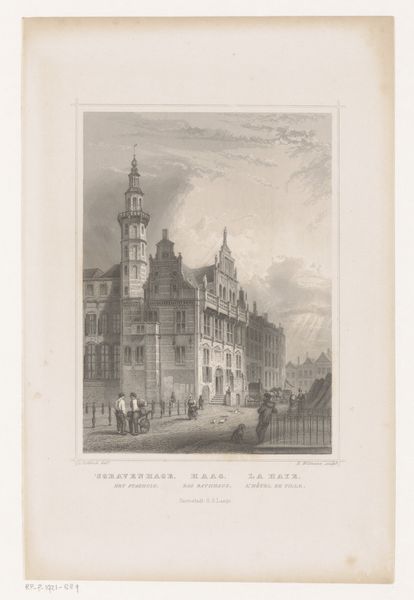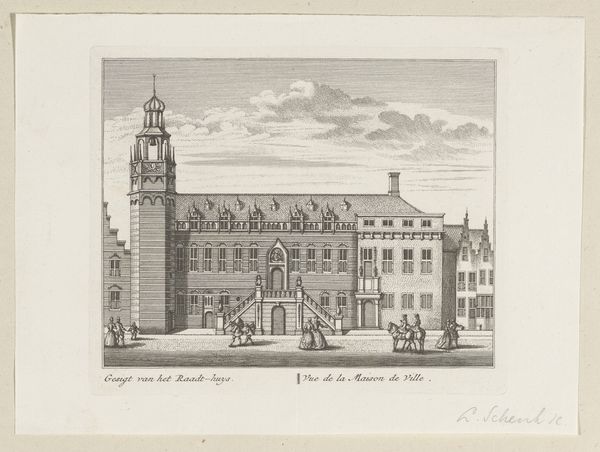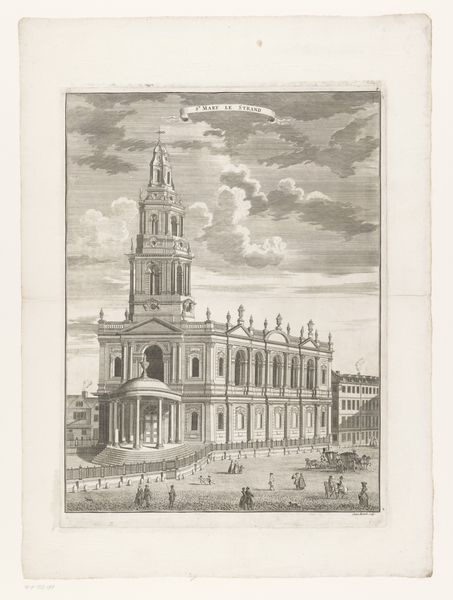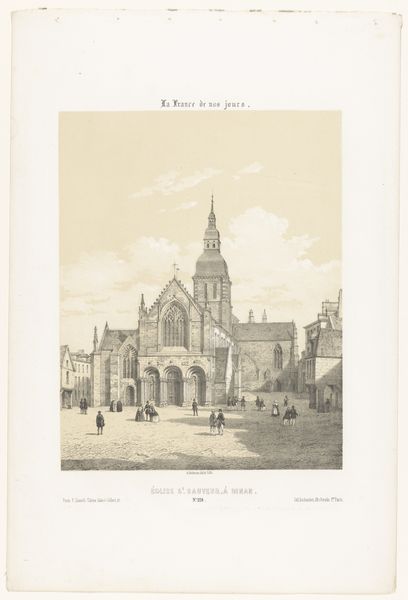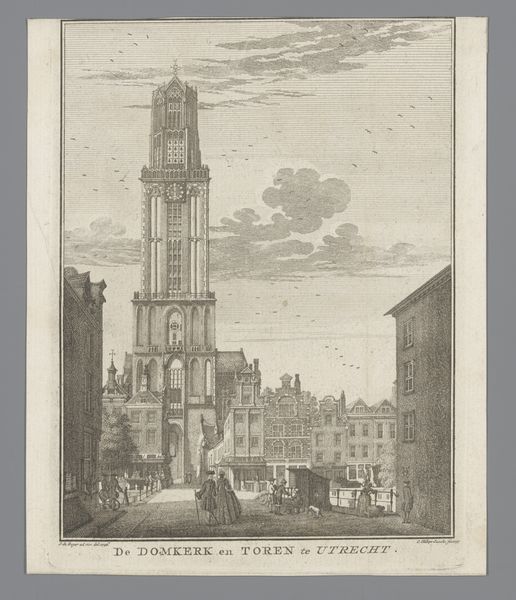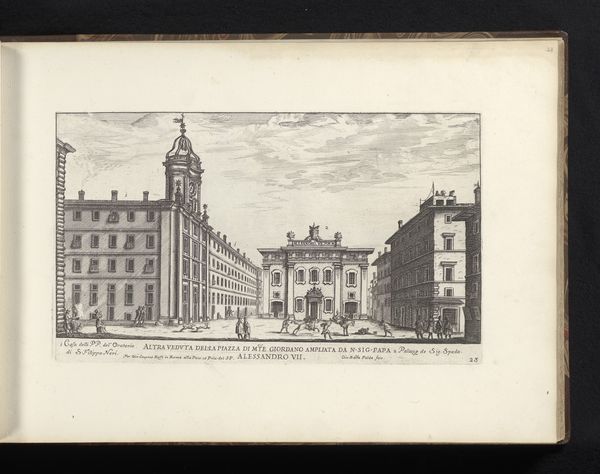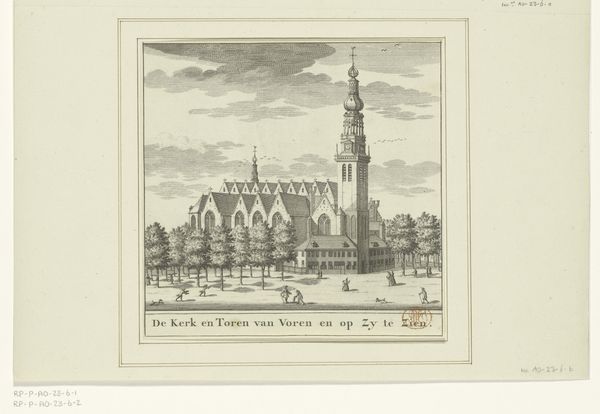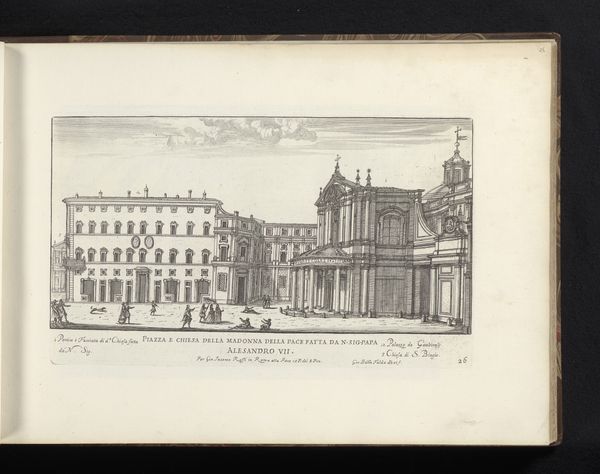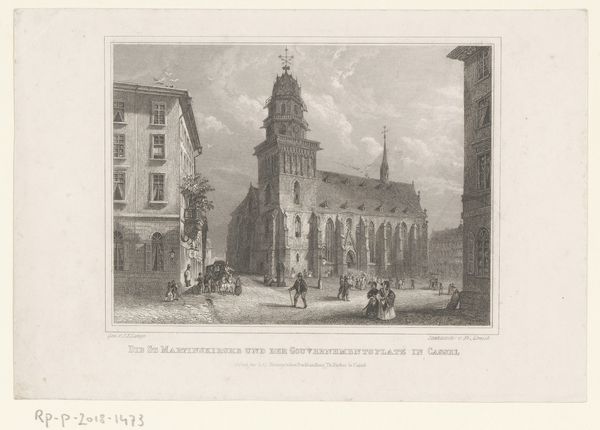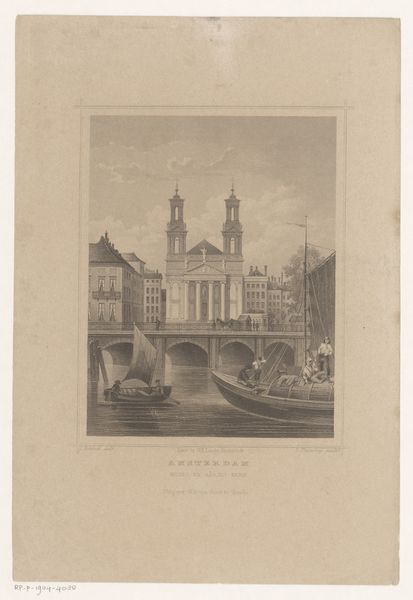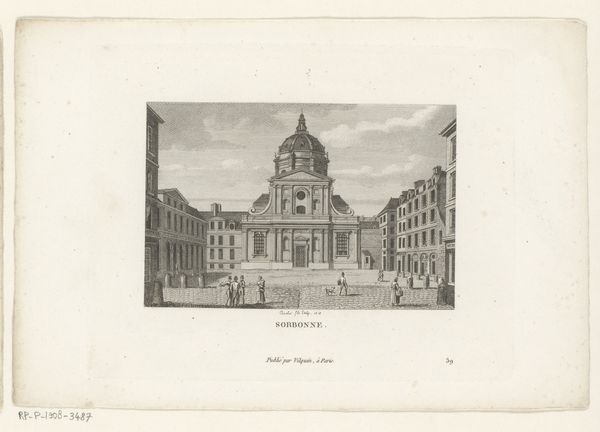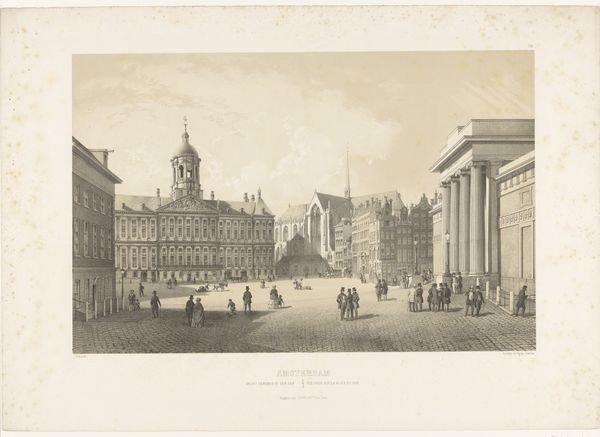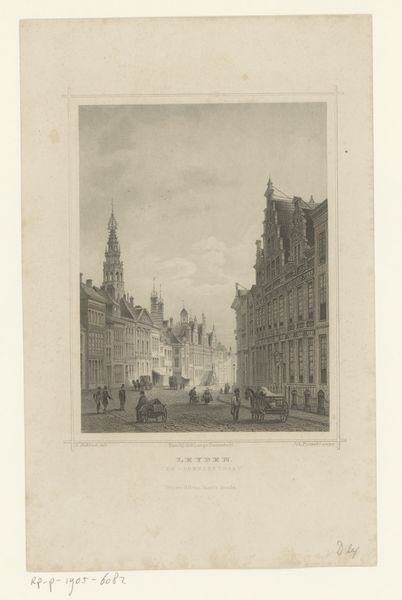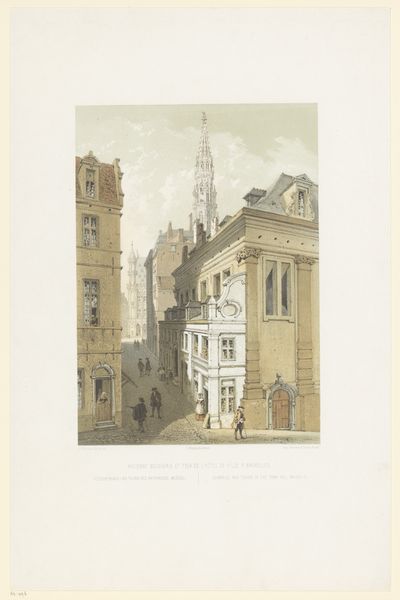
Dimensions: height 433 mm, width 292 mm
Copyright: Rijks Museum: Open Domain
Curator: This engraving, entitled "View of the Sainte-Croix Church in Nantes," was created by Léon Auguste Asselineau sometime between 1863 and 1864. It’s currently held in the Rijksmuseum. Editor: Oh, my goodness, it's so delicately rendered! The texture of the stone is exquisite and, though subtle, the liveliness of the street adds such a touch of human drama. There's something so romantic about how it captures the feeling of a quiet, bustling city. Curator: The choice of romanticism certainly resonates. This was a period heavily influenced by historical perspectives, where structures like Sainte-Croix served as both a source of pride and tangible links to France's complex socio-political evolution. Prints such as this made architecture widely accessible. Editor: Do you think that making this architecture more accessible in turn created a more democratic perspective? Curator: Possibly. The circulation of images of buildings through prints was also a means of reinforcing certain cultural values and national identity through what was deemed worthy of memorialization and distribution. The presence of daily life gives this religious edifice an even wider public appeal. Editor: It's curious though, isn’t it? This juxtaposition of the eternal, represented by the architecture, against the ephemeral moments of daily existence. The printmaker somehow managed to distill an essence, didn't they? One foot in reality, another in idealized grandeur. Curator: Prints like this, even as a mass-produced medium, catered to a burgeoning middle class who appreciated a fusion of accessible art and recognizable local monuments. They could own a piece of their city. Editor: That is such a wonderful sentiment, to carry home a little piece of one's place! Almost like pressing a flower between the pages of a novel. You know, thinking about it... isn't that what we all hope to do? To somehow hold onto these seemingly insignificant, incredibly poignant experiences in time. Curator: Yes, these images shaped our cultural memory in tangible ways. They played a role in how the general populace viewed their place in history. Editor: And maybe, just maybe, gave everyone a reason to pause, even for a moment, amidst the urban clamor, and feel like they belong.
Comments
No comments
Be the first to comment and join the conversation on the ultimate creative platform.
